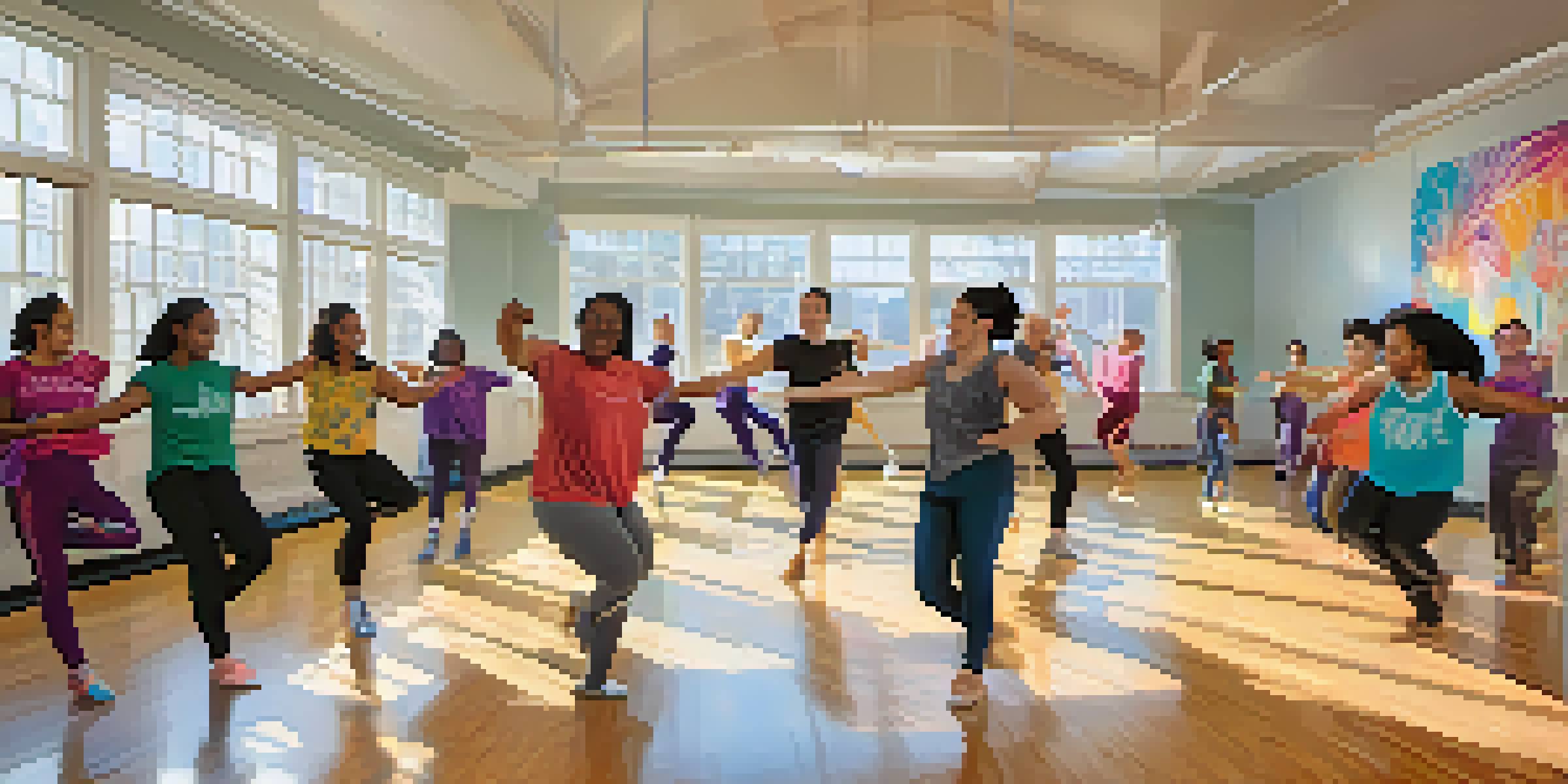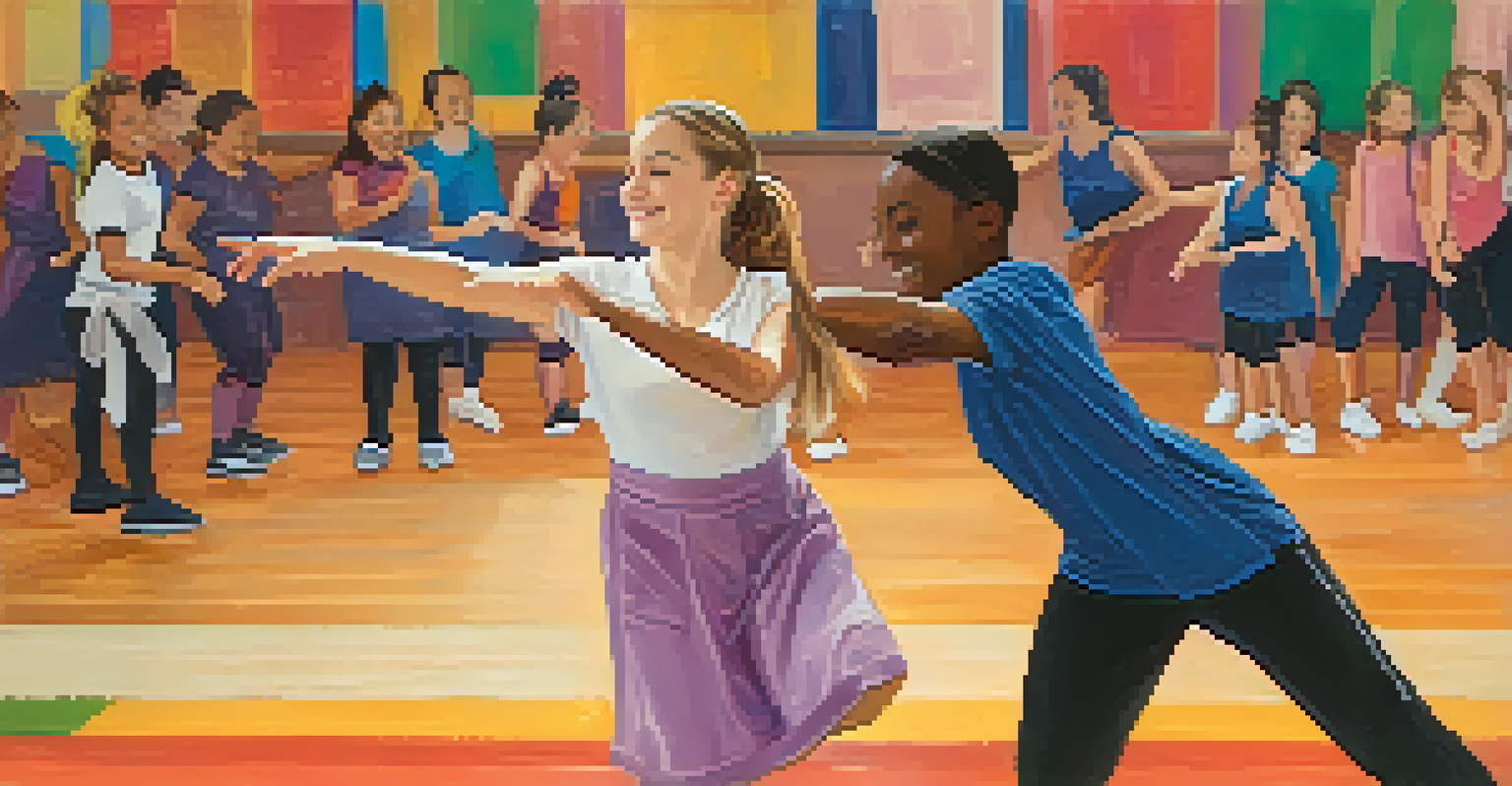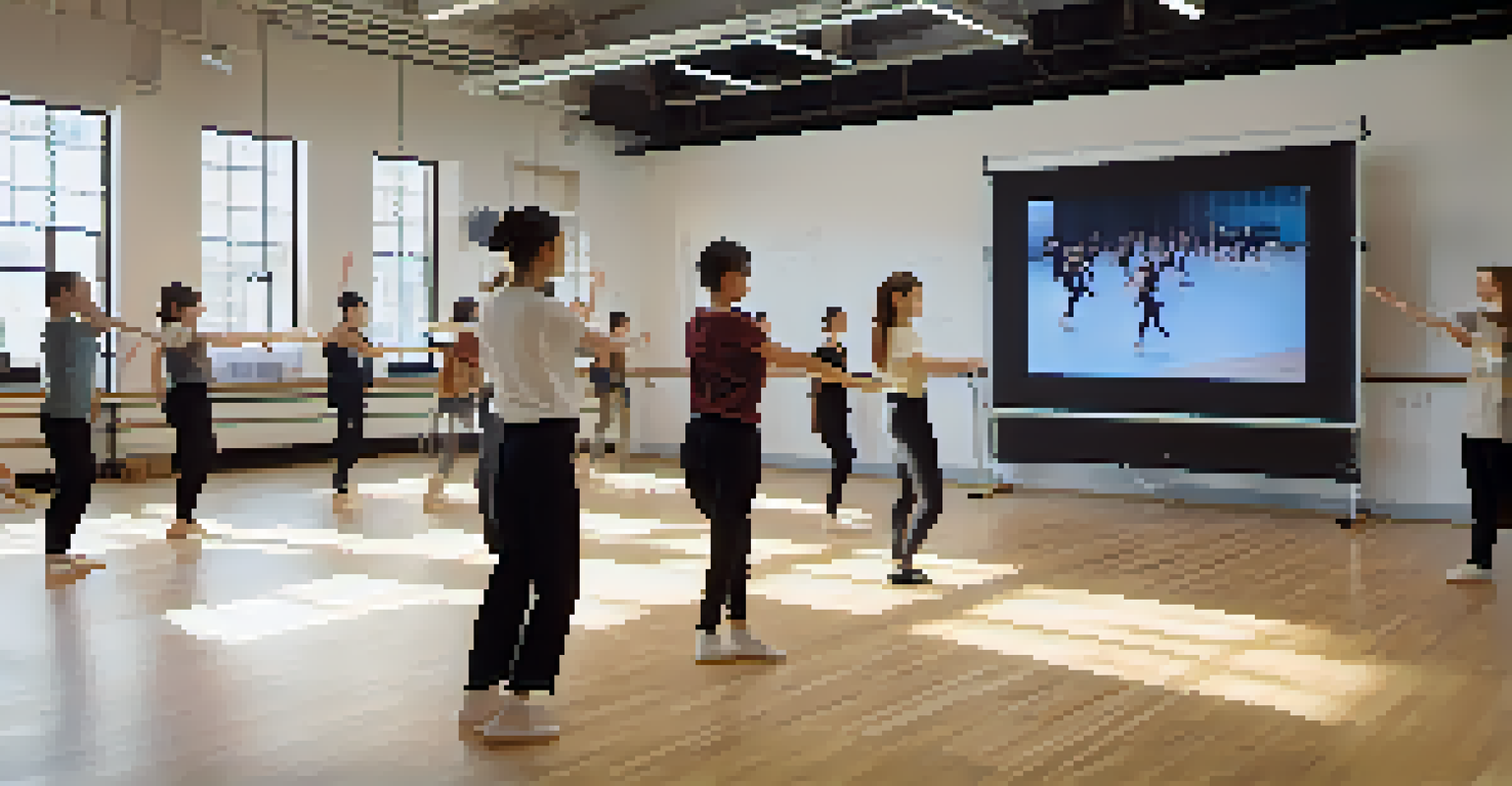Adapting Dance Pedagogy for Students with Disabilities

Understanding the Importance of Inclusive Dance Education
Inclusive dance education is crucial for fostering creativity and self-expression in all students. It encourages an environment where everyone, regardless of ability, can participate and thrive. By embracing diversity in dance classes, instructors can create a richer learning experience that benefits both students with disabilities and their peers.
Dance is the hidden language of the soul.
Moreover, inclusive practices help to break down barriers and stereotypes associated with disabilities. When students see their classmates engaging in dance, it promotes empathy and understanding. This shift in perspective can empower students with disabilities, enhancing their confidence and social skills.
Ultimately, inclusive dance education not only enriches the lives of students with disabilities but also cultivates a sense of community among all participants. This shared experience can lead to lasting friendships and a greater appreciation for the art of dance.
Identifying Different Types of Disabilities in Students
Understanding the various types of disabilities is essential for adapting dance pedagogy effectively. Disabilities can be categorized into physical, sensory, cognitive, and emotional areas, each requiring tailored approaches. For instance, a student with a physical disability may need modifications in movement, while someone with a cognitive disability might benefit from clear, step-by-step instructions.

It's also important to recognize that disabilities can vary widely in severity and impact. Some students may have mild challenges that only slightly alter their dance experience, while others may require significant adaptations. Getting to know each student's unique needs is vital for creating an inclusive atmosphere.
Value of Inclusive Dance Education
Inclusive dance education fosters creativity and self-expression, allowing all students to thrive in a supportive environment.
Instructors should take the time to communicate with students and their families about individual capabilities and preferences. This open dialogue fosters trust and allows for the development of personalized strategies that enhance participation and enjoyment in dance.
Creating a Flexible and Adaptable Dance Curriculum
A flexible dance curriculum is key to meeting the needs of all students, particularly those with disabilities. This involves incorporating various teaching styles and techniques, such as visual aids, demonstrations, and tactile cues. By providing multiple ways to learn, instructors can ensure that every student can engage with the material.
Inclusion is not a matter of political correctness. It is the key to growth.
Additionally, offering modifications for different dance techniques allows students to experience success at their own level. For example, if a class is learning a particular routine, instructors can provide alternative steps or encourage creative expression through improvisation. This adaptability not only keeps students motivated but also fosters their individual growth.
Moreover, it can be beneficial to include themes and concepts in the curriculum that resonate with students' experiences. By connecting dance to their lives, students with disabilities may find greater meaning in their practice, enhancing their commitment and enthusiasm.
Utilizing Technology to Enhance Dance Learning
Technology can play a significant role in making dance education more accessible for students with disabilities. Tools like video tutorials, apps, and virtual reality can offer innovative ways to engage students and enhance their learning experience. For instance, visual learners might benefit from slow-motion video demonstrations that break down complex movements.
Additionally, assistive technology can provide tailored support for individual needs. Students with hearing impairments may find that visual cues or captions in dance videos help them follow along. Similarly, adaptive equipment can enable those with physical disabilities to participate more fully in class activities.
Need for Adaptive Curriculum
A flexible and adaptable dance curriculum is essential to meet the diverse needs of students with varying abilities.
Incorporating technology not only aids in learning but also prepares students for a world where digital skills are increasingly important. By embracing these tools, dance educators can create a more inclusive and engaging environment for all learners.
Fostering a Positive and Supportive Class Environment
Creating a positive and supportive class environment is essential for students with disabilities to thrive in dance. Instructors should promote a culture of encouragement, where every student feels valued and respected. Simple gestures, like celebrating small victories, can significantly boost a student's confidence.
Peer support is also vital in fostering a sense of community. Pairing students with and without disabilities can encourage collaboration, empathy, and understanding. This not only benefits students with disabilities but also enhances the social skills of their peers, creating a more cohesive class dynamic.
Furthermore, setting clear expectations and rules can help create a safe space for everyone. When students know what to expect, they feel more comfortable taking risks and expressing themselves through dance.
Training Educators in Inclusive Dance Practices
To effectively adapt dance pedagogy for students with disabilities, educators must receive proper training in inclusive practices. This may involve workshops, professional development courses, or mentorship programs focused on disability awareness and teaching strategies. By equipping educators with the right tools, they can better meet the diverse needs of their students.
Additionally, ongoing education can help instructors stay updated on the latest research and best practices in inclusive dance education. Understanding the nuances of different disabilities and how they impact learning will enable teachers to create more effective and engaging lesson plans.
Role of Technology in Dance Learning
Utilizing technology can enhance accessibility and engagement in dance education for students with disabilities.
Moreover, fostering a network of support among educators can encourage the sharing of resources and experiences. By collaborating and learning from one another, dance instructors can continually improve their teaching methods and create a more inclusive environment.
Measuring Success and Progress in Inclusive Dance Education
Measuring success in inclusive dance education goes beyond traditional assessments; it involves recognizing personal growth and development. Instructors should consider various metrics, such as student participation, skill acquisition, and social interactions, to evaluate progress. This holistic approach helps to capture the full scope of a student's experience in dance.
Moreover, incorporating student feedback can provide valuable insights into their learning journey. Encouraging students to share their thoughts on what works for them can help educators fine-tune their approaches. This sense of agency can empower students and foster a deeper connection to their dance practice.

Finally, celebrating achievements, regardless of size, reinforces the value of each student's journey. Acknowledging progress and milestones creates a positive atmosphere that motivates students to continue striving for their personal best.